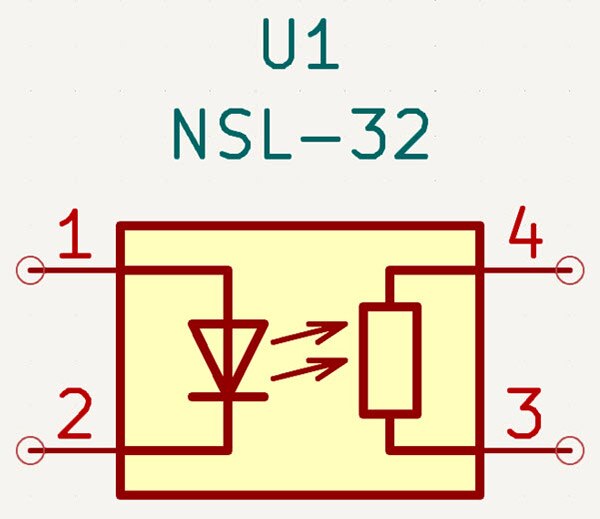制造商零件编号 VO617A-9X017T
OPTOISOLTR 5.3KV 1CH TRANS 4-SMD
Vishay Semiconductor Opto Division
Today we will go over what an optocoupler is, break down its name into something that's easily understandable, and provide some project examples that would be great for an optocoupler application. Let's dive straight in!
Optocouplers, sometimes referred to as opto-isolators or photocouplers, is an electrical component that mainly consists of two internal compartments; one section is an LED that emits light, and the other section is a phototransistor that turns on when the LED is on.

Here is a simple diagram of an optocoupler on the KiCad software which demonstrates the functionality perfectly. On one end, pins 1 and 2 are directly connected to the LED, and on the other end, pins 3 and 4 are connected to a phototransistor. The transistor is off when there is no light; however, when there is a current going through pins 1 to 2, the light emitted from the LED is able to close the phototransistor, resulting in a closed circuit so that any current can go through from pins 3 through 4. In essence, optocouplers are pretty straightforward, and that is where their name "opto-isolator" comes from because these two ends are electrically isolated from each other.

There are multiple reasons why someone could consider the use of an optocoupler in their project; the simplest reasoning for an optocoupler will be if there are two separate power supplies being used in a circuit board. In more common instances, optocouplers can also be used to isolate digital interfaces, microprocessor input/output switching, and in some cases remove electrical noise from a signal.
However, there are some considerations to keep in mind when applying an optocoupler for your circuit design.
Now we will go over the application of optocouplers in galvanic isolation to improve the SPI (Serial Peripheral Interface) protocol. Due to the concern of electrical noise (coming from impedance from non-differential pair lines), using an optocoupler allows the wires to be isolated without interference signals impacting your signal.

For those who may not be familiar with what SPI is, this would be a pretty good application due to the disadvantages of the SPI protocol. To explain, SPI is a non-differential pair communication protocol that is very often used to communicate data from one device (the master) to another (the slave device). The non-differential pair aspect is also quite important: a huge concern when transferring data to another device is the integrity of the signal as it travels long distances or faces impedance from external influence.
SPI is a very simple communication protocol, which makes it really easy to implement but also difficult to preserve for long-distance communication. An optocoupler can make sure to galvanically isolate the lines so that magnetic waves induced by such currents do not impact any other wires running next to itself. This type of circuit is sometimes informally referred to as an SPI isolator circuit or an SPIsolator circuit for short. This is just one specific example where optocouplers can be applied; however, there are usually a ton of other options that an engineer can choose at their own discretion depending on the specifics and the financial constraints of whatever they are trying to build.
If you find this blog post informative, please leave a comment and share it with your friends!